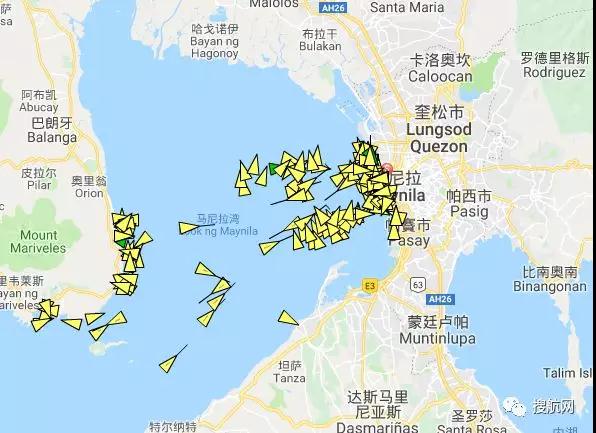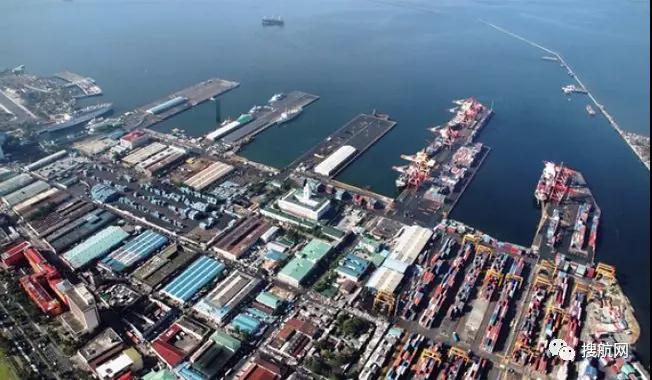Manila, the largest port in the Philippines, is extremely congested or will take urgent action again
- Author:Jim
- Source:Search network
- Release Date:2019-02-20
According to the search network, the largest port in the Philippines, Manila, has been extremely congested, and the port utilization rate has reached 100%, and may even be overloaded.
Truck drivers and customs brokers have called on the government to implement empty container re-export regulations as an emergency measure to solve the congestion problem in Manila port.


“The central bank has still not implemented these regulations. So the question remains, when will the agreement be signed and when the agreement will be implemented correctly,” Mr. Gervacio said.
Abraham G. Rebao, vice president of transportation at Aduana Business Club (ABC), said he did not understand why Customs Director Rey Leonardo B. Guerrero was unable to implement CAO 01-2015.
“Only the Director of the Customs Bureau has the authority to implement it. We are surprised at the reasons for not implementing CAO 01-2015. This may be the only way to completely clean up the port and container yard.”
The country's central bank and the Philippine Port Authority (PPA) also plan to issue a Joint Memorandum Notice (JMC) this month to seek to restore the utilization of the Manila container warehouse to 70%.

Truck drivers and customs brokers have called on the government to implement empty container re-export regulations as an emergency measure to solve the congestion problem in Manila port.

It is reported that in response to this matter, the Philippine Customs Brokers and Freight Association (APBTA) held a press conference on the Joint Administrative Order (JAO) proposed by the Ministry of Finance, the Ministry of Transport and the Ministry of Trade and Industry, and stated that JAO may be in the long run. The port is helpful, but it will not immediately solve the current port congestion problem.
APBTA said that the joint administrative order JAO will be released later this month, and by regulating the charging behavior of international shipping companies, it will be regarded as a "long-term" solution, adding that urgent measures are needed to ensure trade goods. Free flow.
According to the JAO Freight Regulations, shipping companies will not be allowed to collect fees in the Philippines, but will keep the container yard charges consistent with international charges to prevent container yards from abandoning empty containers.
APBTA said that the joint administrative order JAO will be released later this month, and by regulating the charging behavior of international shipping companies, it will be regarded as a "long-term" solution, adding that urgent measures are needed to ensure trade goods. Free flow.
According to the JAO Freight Regulations, shipping companies will not be allowed to collect fees in the Philippines, but will keep the container yard charges consistent with international charges to prevent container yards from abandoning empty containers.

“JAO solves the long-term problem. Where is the solution in the short term? In fact, our port is now 100% utilized... If we wait for the arrival of JAO, it will take time.” Philippine Professional Customs Association ( Rey T. Soliman, president of the Professional Customs Brokers 'Association of the Phils, said that he is also the chairman of the Port Coach and Customs Intermediary Consumer Cooperative (PTCBCC).
Mr. Soliman said that the government should reconsider the Customs Administrative Order (CAO) 01-2015. If it is re-exported within 90 days, it will allow foreign empty containers to stay in the port without paying taxes or customs duties. This can serve as a direct solution to port congestion before the government releases JAO.
"We recommend that, according to the rules, we need to re-export the empty containers in the port. This should be a priority to remove port pollution until the situation returns to normal before executing JAO." He said.
Mr. Soliman said that the government should reconsider the Customs Administrative Order (CAO) 01-2015. If it is re-exported within 90 days, it will allow foreign empty containers to stay in the port without paying taxes or customs duties. This can serve as a direct solution to port congestion before the government releases JAO.
"We recommend that, according to the rules, we need to re-export the empty containers in the port. This should be a priority to remove port pollution until the situation returns to normal before executing JAO." He said.
In an interview with the media on Monday, Teddy Gervacio, president of the Inland Transport and Truck Drivers Association (INHTA), said that some of the terms have become legally prescribed according to the JAO draft that the association has seen.
“The central bank has still not implemented these regulations. So the question remains, when will the agreement be signed and when the agreement will be implemented correctly,” Mr. Gervacio said.
Abraham G. Rebao, vice president of transportation at Aduana Business Club (ABC), said he did not understand why Customs Director Rey Leonardo B. Guerrero was unable to implement CAO 01-2015.
“Only the Director of the Customs Bureau has the authority to implement it. We are surprised at the reasons for not implementing CAO 01-2015. This may be the only way to completely clean up the port and container yard.”
The country's central bank and the Philippine Port Authority (PPA) also plan to issue a Joint Memorandum Notice (JMC) this month to seek to restore the utilization of the Manila container warehouse to 70%.

The Port of Manila, located on the banks of the Bashi River estuary on the southwest coast of Luzon, Philippines, is on the east side of Manila Bay, the largest port in the Philippines, and the largest and most modern port in the Philippines.
The port has three port areas of Nangang, Beigang and international containers. There are 26 main berths, with a coastline of 2931 meters and a maximum water depth of 11.6 meters. The loading and unloading equipment has various shore cranes, gantry cranes, floating cranes, container cranes and ro-ro facilities, among which the maximum lifting capacity of shore cranes is 80 tons. There are also six berths for berths on the sea, with a maximum water depth of 15 meters. The warehouse area of the port area is 640,000 square meters. The international container terminal is a special foreign trade terminal, the port facilities are modernized, and the container throughput is growing rapidly.
The port has three port areas of Nangang, Beigang and international containers. There are 26 main berths, with a coastline of 2931 meters and a maximum water depth of 11.6 meters. The loading and unloading equipment has various shore cranes, gantry cranes, floating cranes, container cranes and ro-ro facilities, among which the maximum lifting capacity of shore cranes is 80 tons. There are also six berths for berths on the sea, with a maximum water depth of 15 meters. The warehouse area of the port area is 640,000 square meters. The international container terminal is a special foreign trade terminal, the port facilities are modernized, and the container throughput is growing rapidly.
